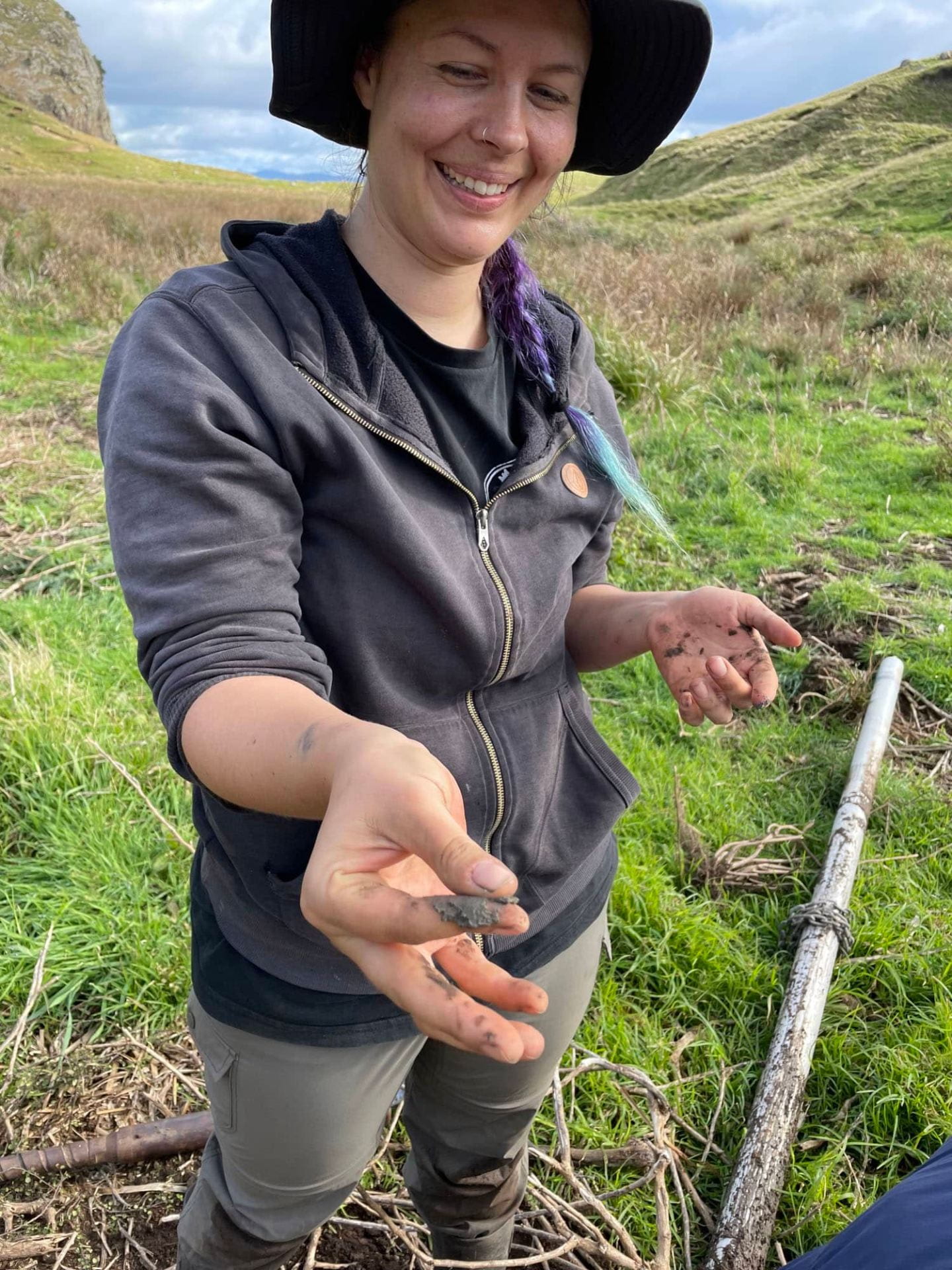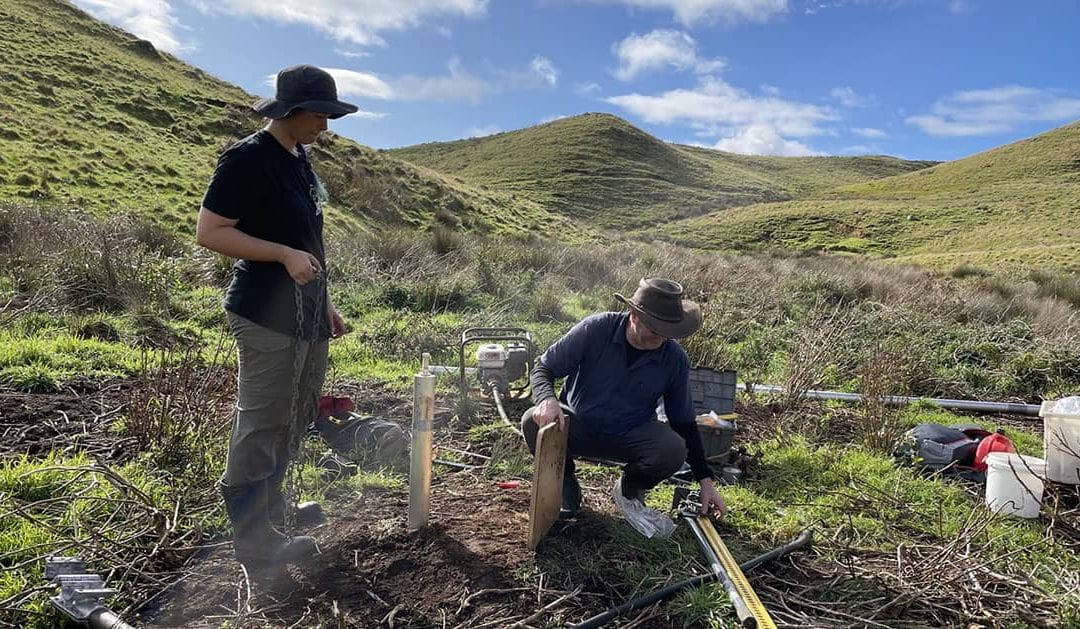1 August 2023
Field work is archaeologist Alex Queenin’s happy place. At the moment, she’s finding that happy place on Ahuahu Great Mercury Island, an island off the west coast of Coromandel.
An archaeological investigation has been running on Ahuahu since 2011, exploring some of the earliest sites of human habitation in Aotearoa New Zealand. A group of Te Pūnaha Matatini investigators are working with data from these sites to explore how Māori learned to live in Aotearoa after their arrival from Polynesia.
For her Te Pūnaha Matatini-funded PhD project, Alex is working to reconstruct human-environment interactions on Ahuahu. She is looking at how paleoenvironmental evidence can inform archaeological interpretations of both settlement and horticulture by studying sediment from the island.
On Ahuahu, she is collecting and analysing sediment cores from catchments adjacent to archaeological sites. Alex uses geochemical techniques like x-ray fluorescence and physical techniques like magnetic susceptibility to understand more about human activity on the island.
“You don’t always get all the information from the archaeological sites,” explains Alex. “For example, when people first got to Aotearoa from Polynesia, you get a bit of initial occupation at archaeological sites and then generally a burn off of the forest to start agriculture. This created charcoal that was mixed into soils to grow taro and kūmara.”
 “Not a lot of that evidence survives in archaeological sites, but you get big sediment deposits in adjacent catchments after the burn off.” This is proxy evidence of human behaviour. “Because the forest cover has been removed, you’ll then get detrital indicators showing that soils started to erode a lot quicker after the burn off.”
“Not a lot of that evidence survives in archaeological sites, but you get big sediment deposits in adjacent catchments after the burn off.” This is proxy evidence of human behaviour. “Because the forest cover has been removed, you’ll then get detrital indicators showing that soils started to erode a lot quicker after the burn off.”
Evidence like this allows archaeologists to understand more about interactions between humans and the environment. “People had to do some very specific environmental engineering to make horticulture work on these islands,” says Alex. “Especially on Ahuahu, where the main bedrock is rhyolite, which is not great for gardening. Early Māori had to make suitable soils for gardening by incorporating things like charcoal and shells.”
This is known as niche construction, where the intentional and unintentional actions of people result in positive or negative environmental outcomes.
Alex’s work is part of the Te Pūnaha Matatini core project on kaitiakitanga and the ecodynamics of Māori horticulture, led by Principal Investigator Thegn Ladefoged. This project draws on the strength of Te Pūnaha Matatini’s interdisciplinary approach, with archaeologists collaborating with soil scientists, mātauranga Māori experts, and mathematical modellers to better understand the long-term dynamics of complex human-environment interactions through the lens of Aotearoa’s first people.
For Alex, working with experts from different disciplines creates a much more detailed understanding of archaeological sites. Archaeology is an interpretive discipline, and using modelling and different lines of multi-proxy evidence creates different ways of looking at the landscape, strengthening confidence in its interpretations.
Before starting her PhD, Alex was working as a contract archaeologist in cultural resource management. She says that working as a contract archaeologist around the North Island was hard work, but a fulfilling job. “You get to meet a lot of great people, and learn a lot of cool stuff – especially from kaitiaki.”
Even though the field is her happy place, Alex still loves lab work. In the future, she hopes to start her own lab for doing multiproxy analysis in conjuction with people doing archaeological work. But for now she has to focus on getting the balance right for her PhD. “I have to make sure to not stay in the lab all the time,” she says. “I need to do some writing, too.”
Kaitiakitanga and the ecodynamics of early Māori horticulture

